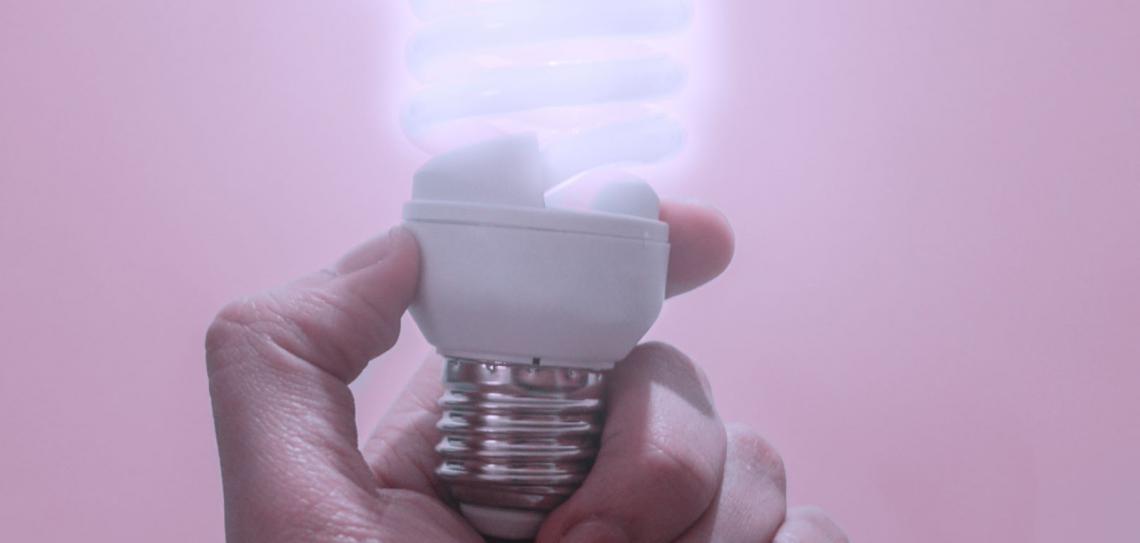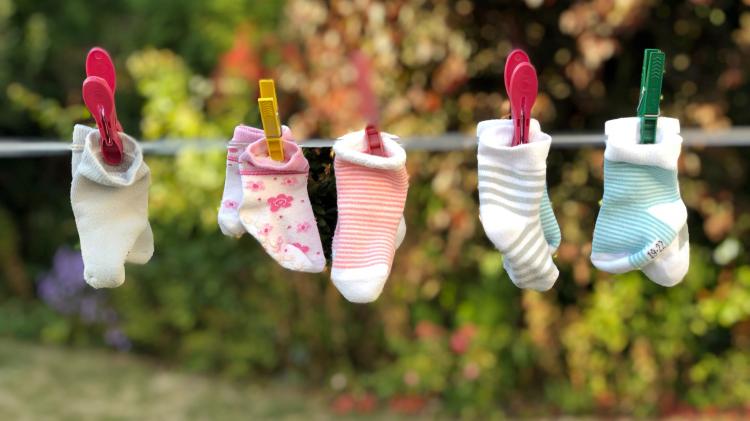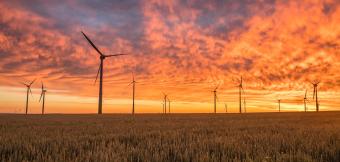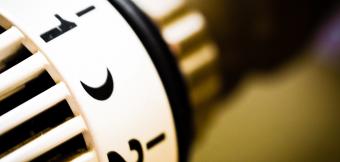
Use efficient appliances
It’s easy to cut the energy used by appliances. Modern fridges use half the electricity of old ones. LED bulbs are way better than halogen. Only boil the water you actually need. Wash clothes at 30C, air dry and skip ironing. Turn things off when not in use. The result? Money and CO2 saved.

Understanding energy efficiency
The amount of energy used by an appliance depends on 1) its operating power and 2) how long it is on. Its power is measured in watts or kilowatts, and energy consumption is measured in watt hours (Wh) or kilowatt hours (kWh). Some appliances, like toasters, have very high energy consumption, but are used for only a few minutes each day. Others, like freezers, have much lower energy consumption but are switched on permanently. Over a day the freezer uses much more energy: Toaster: 1kW x 3 minutes = 0.05kWh per day, Freezer: 0.22kW x 24 hours = 5kWh per day.
Substantial savings can be made by 1) replacing considerably older, less efficient appliances with newer, more efficient ones and 2) using appliances more efficiently. Doing both could save 50% of your household appliance energy consumption (and your bills). Start by using an energy monitor to identify particularly energy-hungry appliances or activities, and to assess your daily energy use pattern.
Repair or replace?
Manufacturing any appliance generates carbon emissions through materials, transport and manufacture (this is referred to as embodied carbon), so always buy to last wherever possible. It makes no sense to ditch a working appliance for a new one just because it's a couple of years old. If a modern, energy efficient appliance breaks you should get it repaired rather than buying a new one. Repairing a broken hoover or plug is often very straightforward; see Action 11: 'Refuse, Reduce, Reuse, Repair & Recycle'. However, if it is is a very old appliance it is better to replace it; carbon savings from running it will soon exceed the embodied carbon from its manufacture.
1. Get efficient appliances
In an average home, about 20% of energy use is for appliances and lights, but there are dramatic differences between old (less efficient) and new (more efficient) appliances - see the table. Efficiency is the proportion of the energy consumed by an appliance that it directly applies to the work it is supposed to do, the rest being wasted as heat or noise; a more efficient appliance wastes less energy, and so does the same job for less overall consumption.
Top 10 energy savings from replacing old appliances and lights
|
Rank |
Appliance |
How used |
Inefficient model, kwh per year |
Highly efficient model, kwh per year |
Saving, kwh per year |
|
1 |
Standard lamp (replace halogen with LED) |
5 hours a day, 335 days |
503 |
54 |
499 |
|
2 |
4 Light bulbs* (replace halogen with LED) |
6 hours a day, 365 days |
526 |
96 |
430 |
|
3 |
Desktop computer |
Used 4 hours a day on 240 days, plus sleep mode 365 days |
506 |
97 |
409 |
|
4 |
TVD/ ADSL decoder (vs. not having one) |
365 days continuous |
389 |
0 |
389 |
|
5 |
Fridge/freezer |
365 days continuous |
500 |
201 |
299 |
|
6 |
Iron (vs not having one) |
5 hours a week, 48 weeks |
260 |
0 |
260 |
|
7 |
Tumble drier (vs.not having one) |
2x a week, 32 weeks |
192 |
0 |
192 |
|
8 |
TV (replace LCD with LED) |
335 days, 4 hours a day |
241 |
54 |
187 |
|
9 |
Washing machine (replace old with new) |
4 times a week, 48 weeks |
259 |
173 |
86 |
|
10 |
Oven* (replace old with new) |
77 |
48 |
29 |
|
|
Total potential saving |
2,520 |
Source. Items marked * are the author’s own calculations.
Updating light bulbs, computer and fridge/freezer will have the greatest effect. Ditching the tumble dryer and iron will also make a big impact. However, the embedded CO2e in ovens or washing machines probably means they aren’t worth replacing.
Several devices generally use less than 50kWh a year; mobile phone charger, games console, radio alarm, coffee machine, hair dryer, toaster, modern computer and laptop.
When buying new appliances always read the energy efficiency label; differences can be huge, e.g. 25kg annual CO2e versus 310kg CO2e for the best and worst Ultra HD flat screen TVs. Identify the best performing models.

2. Use appliances efficiently
Being energy aware and taking a few simple actions will have a real impact on power usage.
Lights
- Turn off lights if not using them
- Maximise daylight - paint walls light shades, and position mirrors to reflect light
Cooking - oven
- Cook as much as possible in one go. Use the middle and lower shelves as well as the top.
- Keep the oven closed while cooking
- Defrost frozen food in the fridge overnight
- Only preheat if specified in the recipe
- Cut food into smaller pieces to cook more quickly
- Use the fan assist
- For longer cooking cycles, switch off oven 10 minutes early and use the residual heat to finish cooking
- Gas ovens are much cheaper to run than electric, and gas has lower CO2 emissions
- Always use the right temperature setting
- A microwave uses a fraction of the energy of an oven
Cooking - other
- When cooking soup, bring to the boil slowly, then switch off. It will continue to cook
- When boiling veg in a pan, boil in the kettle first, then add salt, use a lid, and keep it simmering not bubbling
- Always use the toaster not the grill for toast
- If making tea for one or two, only third or half fill the kettle
Laundry
- Set your washing machine to 30C (87F) not 60C (140F)
- Only wash when there is a full load
- Air dry, don’t tumble dry
- Minimise ironing, or ditch it completely
Fridges and freezers
- Site your fridge and freezer in a cool position
- Don't leave the fridge door open
- Make sure seals are tight
- Keep your fridge setting between 3°C and 5°C (37 and 41°F)
- Keep the fridge no more than three quarters full
- Clean the condenser coils at the back of the fridge
- Defrost the freezer twice a year
Home entertainment
- Switch off at the mains. Some devices use more energy on standby than in normal use
- Check the energy consumption of new products you buy
- Go for a smaller TV screen
- Invest in a wind-up/ solar powered radio
Picture credits: 1) Matias Wong - Unsplash.com 2) Squared One - Unsplash.com 3) Christian Fickinger - Unsplash.com
Replace your light bulbs with low energy versions
Rethink your laundry to reduce energy use
Do an energy audit of your community building
Campaign for improved regulations in your country



